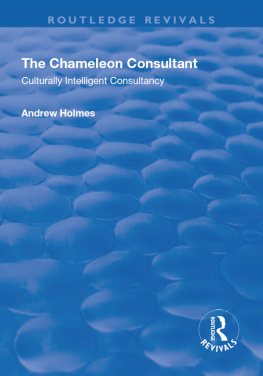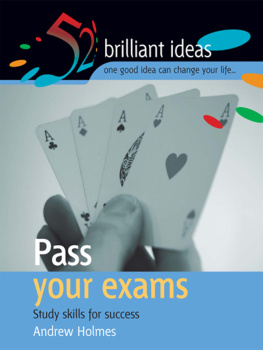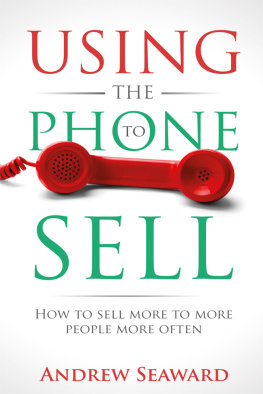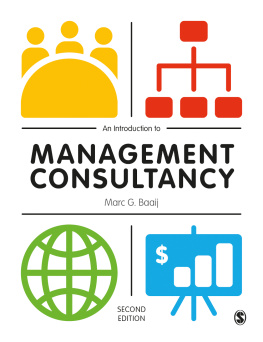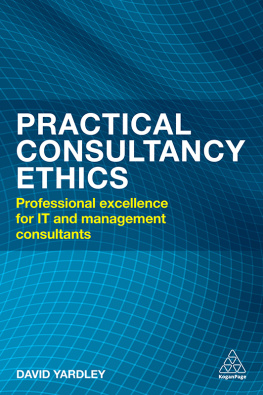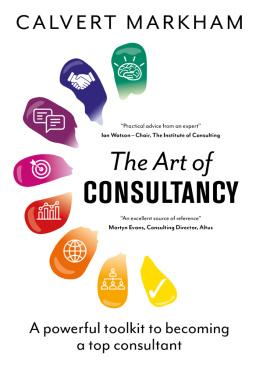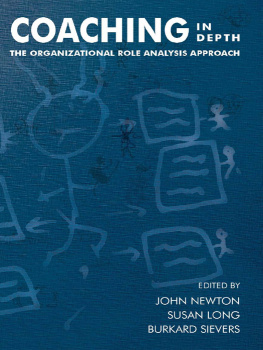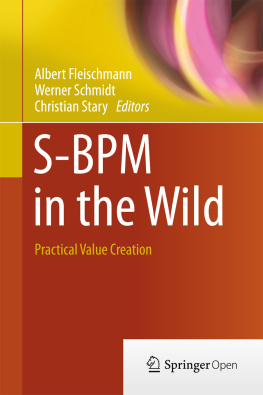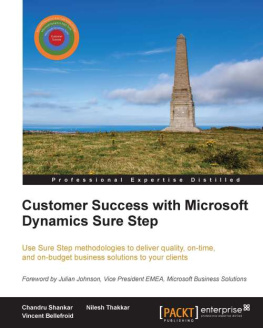The Chameleon Consultant
To those consultants who know that success depends on more than just raw intelligence
The Chameleon
Consultant
Culturally intelligent consultancy
ANDREW HOLMES
First published 2002 by Gower Publishing
Reissued 2018 by Routledge
2 Park Square, Milton Park, Abingdon, Oxon OX14 4RN
711 Third Avenue, New York, NY 10017, USA
Routledge is an imprint of the Taylor & Francis Group, an informa business
Copyright Andrew Holmes 2002
Andrew Holmes has asserted his right under the Copyright, Designs and Patents Act 1988 to be identified as the author of this work.
All rights reserved. No part of this book may be reprinted or reproduced or utilised in any form or by any electronic, mechanical, or other means, now known or hereafter invented, including photocopying and recording, or in any information storage or retrieval system, without permission in writing from the publishers.
Notice:
Product or corporate names may be trademarks or registered trademarks, and are used only for identification and explanation without intent to infringe.
Publishers Note
The publisher has gone to great lengths to ensure the quality of this reprint but points out that some imperfections in the original copies may be apparent.
Disclaimer
The publisher has made every effort to trace copyright holders and welcomes correspondence from those they have been unable to contact.
Typeset in 9 point Stone Serif by IML Typographers, Birkenhead, Merseyside
A Library of Congress record exists under LC control number: 566084074
ISBN 13: 978-1-138-71823-4 (hbk)
ISBN 13: 978-1-315-19597-1 (ebk)
Contents
I came into consulting comparatively late. Unlike most, who enter straight from university, or after completing their MBA, I spent eight years in industry prior to making the move, so consultancy was a bit of a shock. However, I found it offered opportunities for significant personal development and challenge.
As I moved from sector to sector, organization to organization, I noticed that each client required subtle, and sometimes not so subtle, changes in the way the service was delivered. This suggested that the one size fits all approach was unlikely to work in all circumstances. It also became clear from observing my colleagues that some were more successful at moving between clients and sectors than others. For example, those experienced in one sector, say investment banking, found it very difficult to adjust to a client that fell outside the fast-moving, brash culture that typifies investment banks. The same was true for those working in the public sector who were more familiar with the slow decision-making process associated with government institutions. Such maladjustment often spelt disaster for the consultant who found it difficult to deliver in such an alien environment. And, as we will see later, in extreme cases this can be disastrous for the firm and the client too, with the firm losing fee income (and risking being sued) and the client ending up with a failed project and a bitter experience of using consultants.
Having studied organizational culture as part of my MSc, I began to realize that there was a need to consider this when delivering consultancy services. The need to sensitize consultants as to what to expect before they entered the client site for the first time was critical, if only to reduce the shock most consultants experienced when they moved from one client to the next. Equally critical was the need to ensure that the approaches used to deliver the consultancy, such as methods, tools, client management and so on, were also adjusted to fit in with the way in which the client worked. The big question was how this could be done.
Organizational culture is generally inaccessible: it is difficult to describe and can often become too esoteric to be of any use, and people are often switched off by it. Indeed, there are many books on culture, and many models. However, most do not describe culture in a way that provides any basis for the kind of sensitivity I was seeking to generate within my fellow consultants. Then, in between assignments at an investment bank and a United Kingdom government department, I was fortunate enough to spend six weeks at Henley Management College researching this concept. Whilst there, I came across the work of Rob Goffee and Gareth Jones, who had derived what I consider to be an effective model of organizational culture, and one on which it was possible to develop the concept of cultural intelligence. This model described four basic types of culture networked, mercenary, communal and fragmented each having its own unique characteristics. More important was the accessibility of the model, and its ability to make the complex nature of culture into something that was easily understood. I believed that if it worked for me it could work for the rest of the consulting community.
The concept of cultural intelligence in consulting is quite simple. If, as a consultant, you are able to adjust your behaviour, approaches and working style to those of the client, you are more likely to succeed, because not only would you be able to reduce the time it takes to adapt to your new client, you would also be able to win their trust more readily. And because the overriding success factor in any consulting engagement is the winning of client trust and commitment, the quicker this is achieved the better the engagement will be for all parties. But all too often the consultant believes he or she can do it by intelligence alone. Outsmarting the client is, unfortunately, not the way to win them over and, if anything, serves to create a bad name for the consulting profession. Lasting value is only achieved by making things happen for a client that can be sustained once you leave. And it is this value that helps to forge long-term client relationships and position the consultant as a trusted advisor.
The Chameleon Consultant will be of interest to consultancy firms and consultants alike. Applicable to the sole trader, the boutique and larger firm, it will prove to be an invaluable reference and guide to improving the entire consulting process, using culture to gain and retain competitive advantage, and deliver client satisfaction.
AH
After writing my first book, Failsafe IS project delivery, I agreed that I would not write another book for at least a couple of years, if only to spare my family from the endless battle to get me away from my desk. However, after spending time at Henley Management College researching the concept of cultural intelligence, I saw the potential for another. And, in the process of writing this one, I have written two others and have been asked to write two more. Maybe the bug is now too great for me to stop.
As before, I am indebted to a small number of people who provided the necessary support and encouragement along the way. In particular, I would like to thank Professor Gareth Jones with whom I had the privilege to work at Henley Management College. He was able to provide the guidance and challenge that allowed the concept of cultural intelligence to become more than a germ of an idea. I would also like to express my appreciation to HarperCollins, which kindly permitted me to use material from The character of a corporation by Rob Goffee and Gareth Jones. In addition, I am grateful to United Feature Syndicate, Inc., which kindly allowed me to use the Dilbert strip that appears at the beginning of . This is a company that has truly embraced cultural intelligence. Second, Jacqueline Clarke and Sacha Jensen of Clarke-Wetter, who provided views and opinions on the recruitment, retention and development of culturally intelligent consultants and who added to the quality of the book by linking cultural intelligence to the work of Belbin. Finally, James McColl of the Leverage Group, who provided some perspectives on the qualities of good and bad consultants.

